In the early 2010s, the federal Labor government made the disastrous decision to allow the export of liquefied natural gas (LNG) from Queensland without forcing gas companies to first supply Australians.
Gary Grey, the then-Federal Resources Minister under the Gillard/Rudd Labor governments, argued that domestic gas reserve policies create uncertainty and discourage investment. This pitted the government against Australia’s ailing manufacturing sector, which was yearning for cheaper gas.
“The Australian Government does not agree that domestic gas reservation would keep gas prices down or put more gas into the market”, Gray said in his opening address to the Australian Petroleum Production and Exploration Association conference in Brisbane on 27 May 2013.
“In our view, it would create uncertainty and deter investment in new gas supply”.
Gary Gray reiterated his opposition to East Coast domestic gas reservation in July 2013.
“Let me say very clearly, a reservation policy could not lead to lower gas prices or more gas”, Gray said.
“Calls for intervention in the market only serve to dampen any appetite for the very investment that’s needed to bring on new gas supplies”.
“We must allow our markets to respond as they are intended to do”.
Federal Labor’s anti-reservation stance positioned them against then Western Australian Premier Colin Barnett, whose state government operates a domestic reservation plan that requires major offshore gas projects to reserve some of their gas for the domestic market.
“As a result, the Chevron-led Gorgon and Wheatstone projects are building domestic gas plants in conjunction with the bigger and more lucrative LNG operations while Woodside Petroleum is under pressure to build a domestic operation alongside its Pluto LNG plant near Karratha”, reported The West Australian in May 2013.
“Local manufacturers led by Alcoa have been instrumental in driving the WA Government to implement the domestic gas policy as a way of trying to ensure lower gas prices, and a similar push is under way in eastern Australia”.
The rest is history. The Gladstone LNG export terminals went online, and East Coast Australia now exports almost three-quarters of its gas.
Gary Grey retired from politics in 2016 and took a role as general manager of external affairs for Mineral Resources, a Western Australian mining resources company. Before his federal political career, Grey had worked as an advisor to Woodside Petroleum.
While East Coast gas output has doubled since East Coast gas exports commenced, 25% less gas is now delivered to the domestic market.
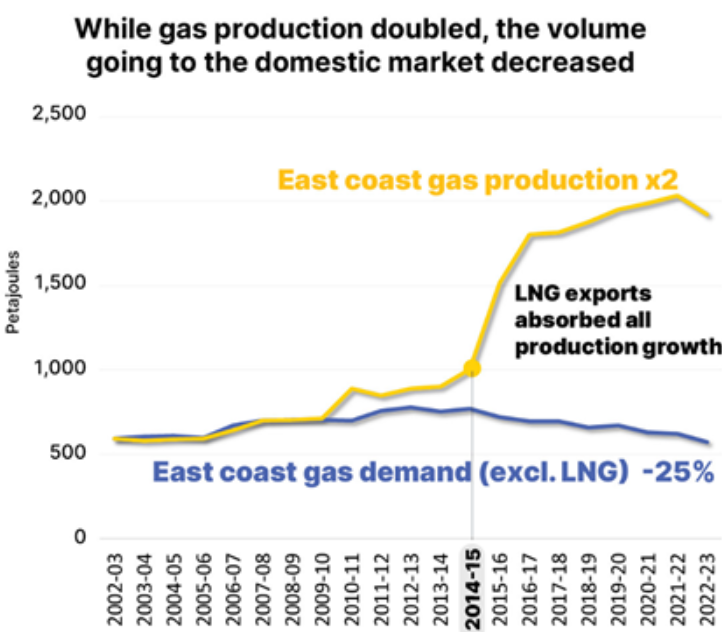
The resulting domestic shortage roughly tripled East Coast gas prices:
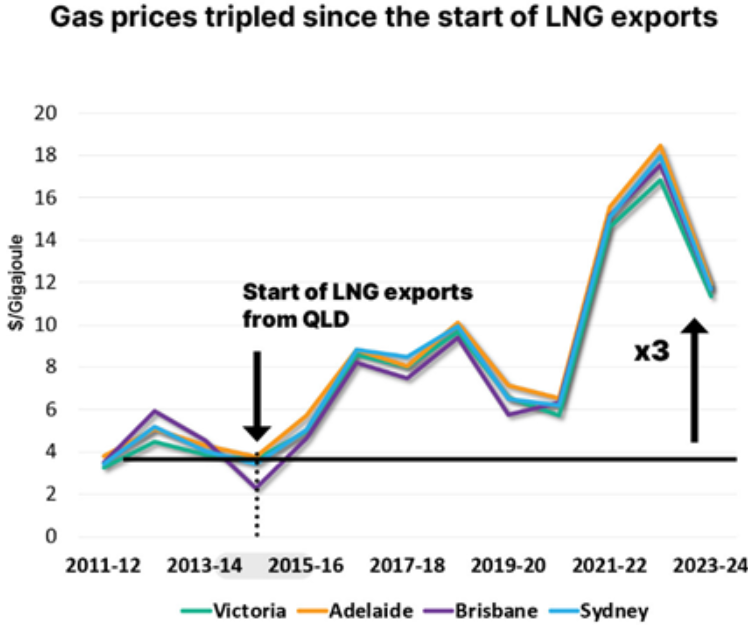
The tripling of gas prices has also driven up electricity prices, given gas’s key role in firming and as a marginal price setter in the wholesale electricity market.
Despite being a major supplier of LNG, East Coast Australia now faces the horrifying prospect of having to import gas. Importing LNG would result in even higher gas and electricity rates, since the East Coast gas price would rise to import-parity levels (i.e., the export prices plus liquefaction, transportation, and regasification).
Australia’s manufacturing sector is suffering the most from rising energy costs.
In Q2 2025, the manufacturing sector’s output as a share of GDP decreased to a record low of 5.0%, down from 8.9% two decades ago and 15% in the mid-1970s.
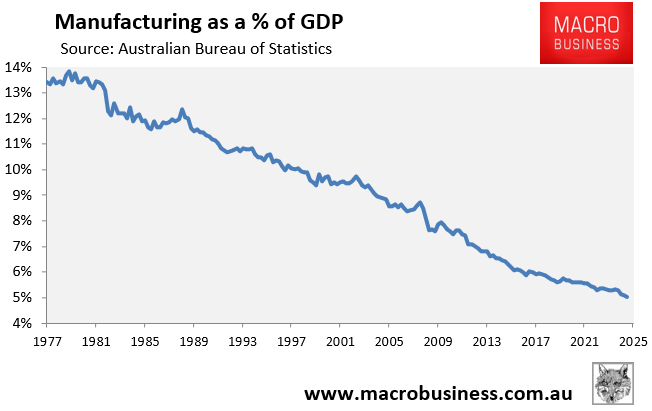
As noted by Vivek Dhar from CBA, “the decline in the share of manufacturing in Australia’s economy has been faster than advanced economies, reflecting the overall challenges of keeping labour, materials, and energy prices low enough for Australia’s manufacturing sector to remain competitive”.
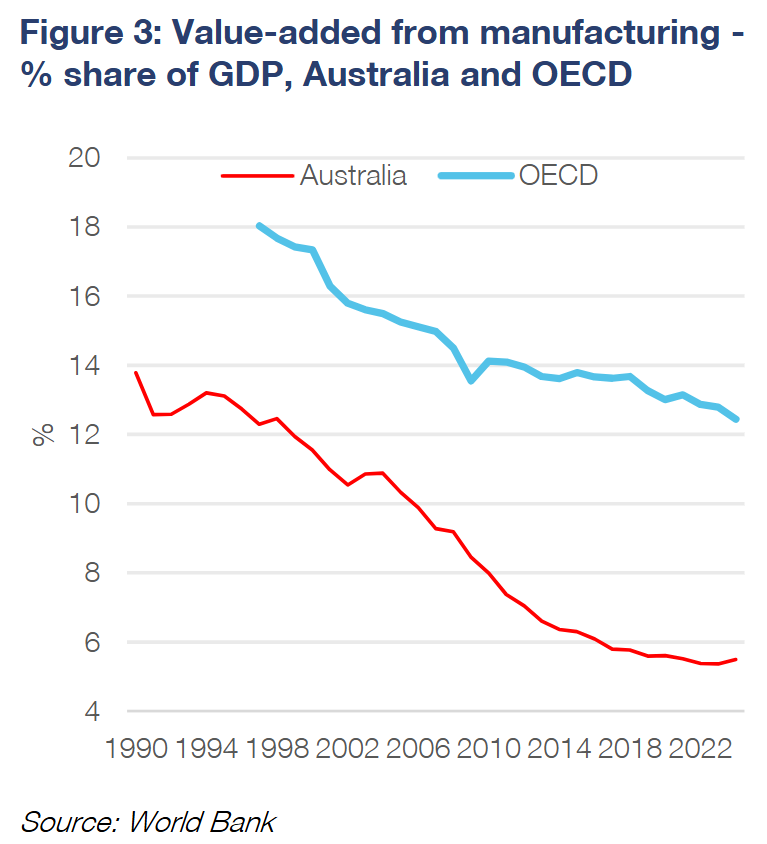
“Manufacturing, excluding the petroleum refining sector, primarily uses natural gas for its energy consumption”, noted Dhar. “Electricity is the second largest energy source, followed by black coal, petroleum products and then more fossil fuels”.
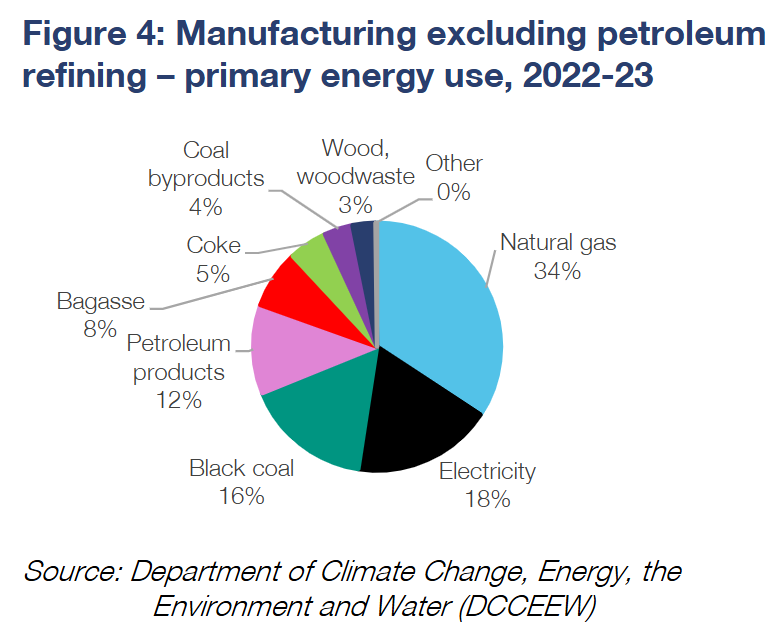
Alex Joiner, chief economist at IFM Investors, clearly illustrates the energy conundrum facing the manufacturing sector.
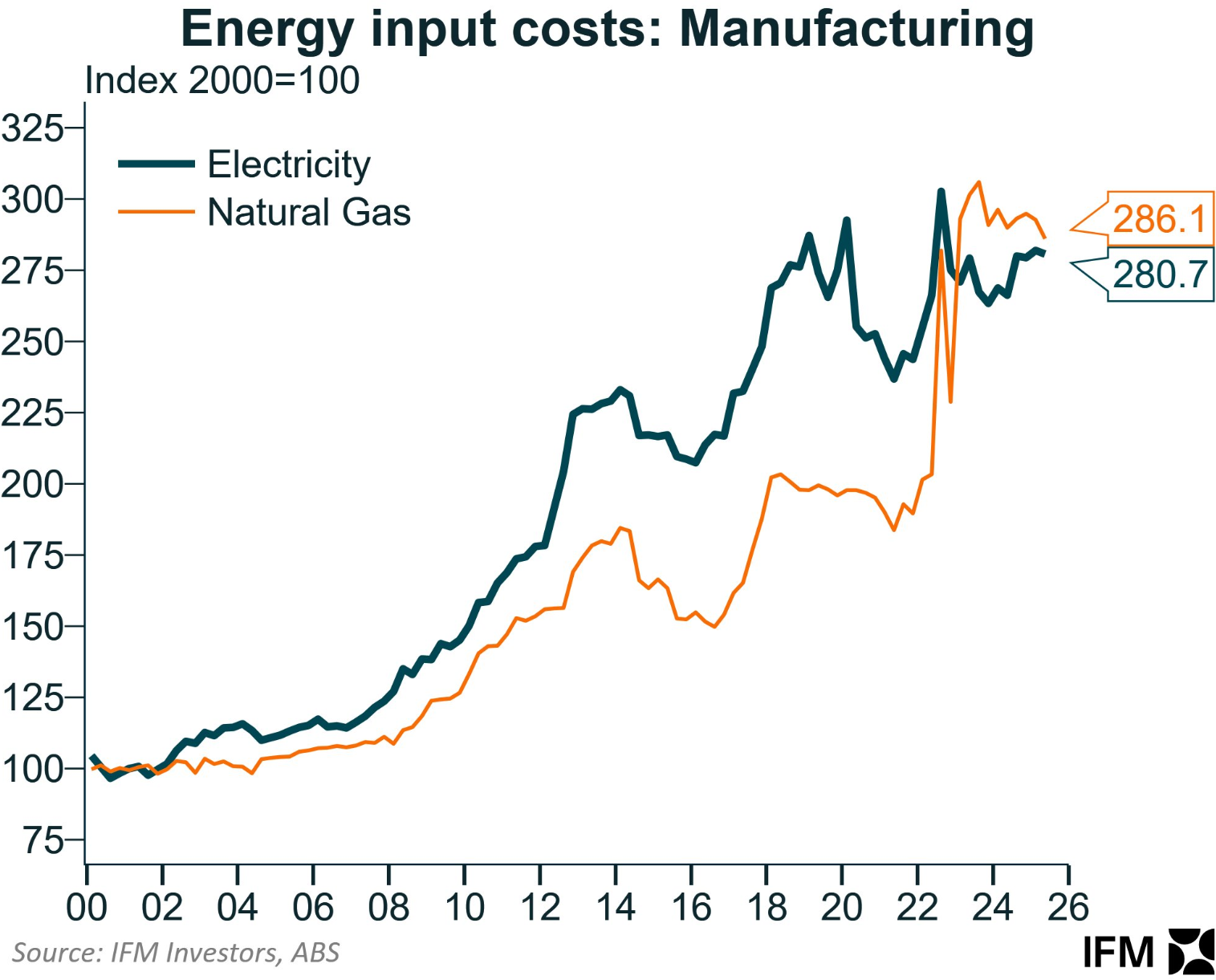
Natural gas input costs in manufacturing have increased by 186% since 2000, while electricity costs have increased by 181%.
The increase in natural gas prices has been particularly severe since 2022, when Russia invaded Ukraine.
With this background in mind, BlueScope Steel CEO Mark Vassella backed the gas reservation plan taken to the last federal election by Coalition leader Peter Dutton, as well as a longer-term reservation policy for the East Coast:
Australia’s gas market on the east coast is broken. Unless it is fixed and domestic customers have access to more competitive supplies, Australian manufacturing will continue to shrink and put at risk the government’s “Future Made in Australia” policy.
This will mean the loss of strategic industries and thousands of jobs that produce the products that are the basis of everything we do – including steel, fertiliser, and building products. And it will mean even higher energy costs, which will be felt by every Australian household…
I recognise resolving the gas issue is not easy, but here’s a way forward.
In the short term, government should ensure uncontracted gas supplies are redirected to the domestic market. In the medium term, structural changes are needed to reserve a proportion of east coast gas supplies for domestic use. And there must be a pricing mechanism that allows manufacturers to remain internationally competitive and invest in decarbonisation…
If we want a future made in Australia, Canberra should consider how to support investment in gas pipelines and storage to get the gas to where it is needed when it is needed most. New gas developments will also be needed as old sources run down. This could also avoid the need for costly imported gas.
We need to act now to ensure affordable gas is available for domestic manufacturing now and in the long term. This is about putting the interests of Australian industry and workers first and delivering on the government’s future made in Australia goals.
Manufacturing Australia chief executive Ben Eade also called for domestic reservation, claiming that the viability of industries was at stake:
“Australia’s gas market is failing domestic customers and putting strategic industries like steel, fertiliser, building materials and food production at risk”, Eade said.
“This has been getting worse for years, but the time for serious reform has come. The federal government’s review of the gas market must deliver structural reform that ensures Australian gas is available for Australian consumers at prices that allow us to compete, decarbonise, invest and grow”.
East Coast Australia now has the highest gas prices of any exporting jurisdiction in the world. These high gas prices have contributed to higher electricity prices, as gas is a major marginal price setter in the wholesale market.
The problem will only get worse if the East Coast begins importing gas into New South Wales, Victoria, and possibly South Australia to alleviate artificial domestic shortages.
Implementing a domestic reserve on the East Coast and bolstering gas pipelines and infrastructure are crucial for cutting prices and mitigating the negative effects of LNG imports.
The alternative is soaring gas and electricity prices, deindustrialisation, less economic sophistication and sovereignty, and lower living standards.

